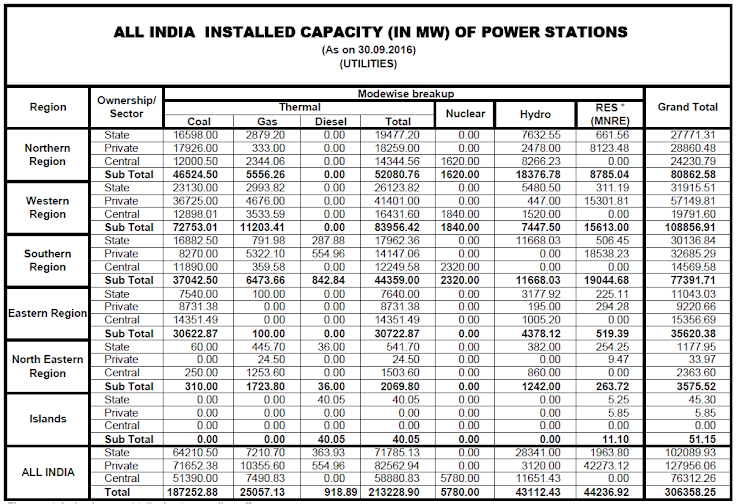Seeking to queer the pitch further for the Congress-led UPA, already on the back foot over issues of corruption, the BJP unveiled a report by its fact-finding team to claim blowing the lid off scams - worth several thousand crore - related to Rs 4 lakh crore hydropower projects in Arunachal Pradesh, and numerous others across the North-Eastern States, mostly ruled by the Congress.
The BJP pegged the total value of the scam in Arunachal and other N-E States at around a whopping Rs 58,000 crore, including Rs 20,000 crore kickbacks in AP. It sought a time-bound probe into the ‘loot' by the Congress Governments in the North East States.
The report points to dubious companies with hardly any experience in the hydropower sector and without enough funds in its accounts getting projects worth several hundred crores. In some cases, allotment was done within days of the companies coming into existence.
"A tour and travel company, stock broking and trading firms, non-existing and Benami companies have been allotted projects worth hundreds of crores of rupees," the report claimed.
With documentary proof in hand, BJP chief Nitin Gadkari chose the occasion to hit out at Congress president Sonia Gandhi. "Sonia Gandhi had made tall promises against corruption. But they are so hollow; not only are the Central leaders corrupt, even the Chief Ministers of Congress-ruled States are making money," he told the media here on Saturday.
Gadkari said since Prime Minister Manmohan Singh represents the North-East in Parliament, it was his ‘responsibility' to check the scams which were hindering the pace of development in the region.
While Leaders of Opposition in the Lok Sabha and the Rajya Sabha would meet the Prime Minister in this regard, he would personally lead a delegation to the President to submit the report, sources said.
The fact-finding committee of BJP comprising MP Bijoya Chakravoorty, general secretary Tapir Gao and national secretary Kirit Somaiya claimed Rs 20,000 crore kickbacks were paid for hydro-power projects worth Rs 4 lakh crore in Arunachal Pradesh.
The Dorji Khandu Government in Arunachal Pradesh signed as many as 137 MoUs and MoAs with dubious and newly formed companies for projects, the committee claimed, adding there were at least 50 different scams in Arunachal Pradesh, Assam, Manipur, Meghalaya, Sikkim and Nagaland
The committee also found that licence fee paid by developers to the Arunachal Pradesh Government for hydro projects was deposited with the Apex Bank, a cooperative bank already facing scam charges.
"The total bribe amount involved in a year in BPL households availing 11 different services is estimated at Rs 8,830 crore," the committee claimed. It also claimed to have found that rice meant for poor was being smuggled into Bangladesh markets, through the Assam border and sold at Rs 10 per kg.
"Similarly, transportation subsidy is claimed in hundreds of crores of rupees and pocketed by transport contractors, who are none other than the Ministers' families," the BJP team alleged. The NIA also unearthed a scam of around `1,000 crore in North Cachar Hills Autonomous District Council, it pointed out.
Interestingly, the committee also found that in Government records every individual in Damin, a revenue circle in Kurung Kumey District of Arunachal, had consumed at least 24 kg of salt per month. This salt was meant for distribution through PDS. "In Koploriang circle, every individual was shown consuming 64 kg of rice per month," the report claimed.
"In Manipur, a loot of more than Rs 300 crore has been committed in the name of cleaning the Loktak Lake. The firm to whom the contract was awarded was found dubious and is suspected to be owned by the Manipur Chief Minister's nephew," the report stated.
Under the SGRY scheme, a bill of Rs 2.31 crore was raised for lifting 2,500 quintals through head load to cover a 5-km distance. "Instead of providing employment to poor, the Khandu Government gave transport contract to the Chief Minister's wife's company," the BJP said.
It also found Nayuma Cable, owned by the family of Sikkim Chief Minister Pawan Chamling, involved in an Entertainment Tax scam wherein the firm acknowledged 2200 cable subscribers, but deposited tax for only 170 of them for several years in row. The Sikkim Government also gave contract for supply of TB medicine to the families of Ministers, who in turn supplied sub-standard medicines.
Tip of Iceberg
- Arunachal Pradesh hydropower projects worth Rs 4 lakh crore included kickbacks of Rs 20,000 crore
- Tuff Energy allotted project of 70 MW, worth Rs 400 crore, within 50 days of its incorporation without any bidding
- Mumbai-based Patel Tours & Travels, with just 200 sq feet of office, given two projects of 15 MW and 12 MW capacity each
- Nido Energy Systems Private Limited, previously Lulla Construction & Trading Pvt Ltd, was allotted projects of 25 MW capacity. Its address in Government records is that of a Government's servant quarters
- Sai Krishnodaya Industries Pvt Limited was allotted five projects, out of which four were allotted on the same day - July 27, 2007
- In some cases, allotment was done within days of the companies coming into existence

















